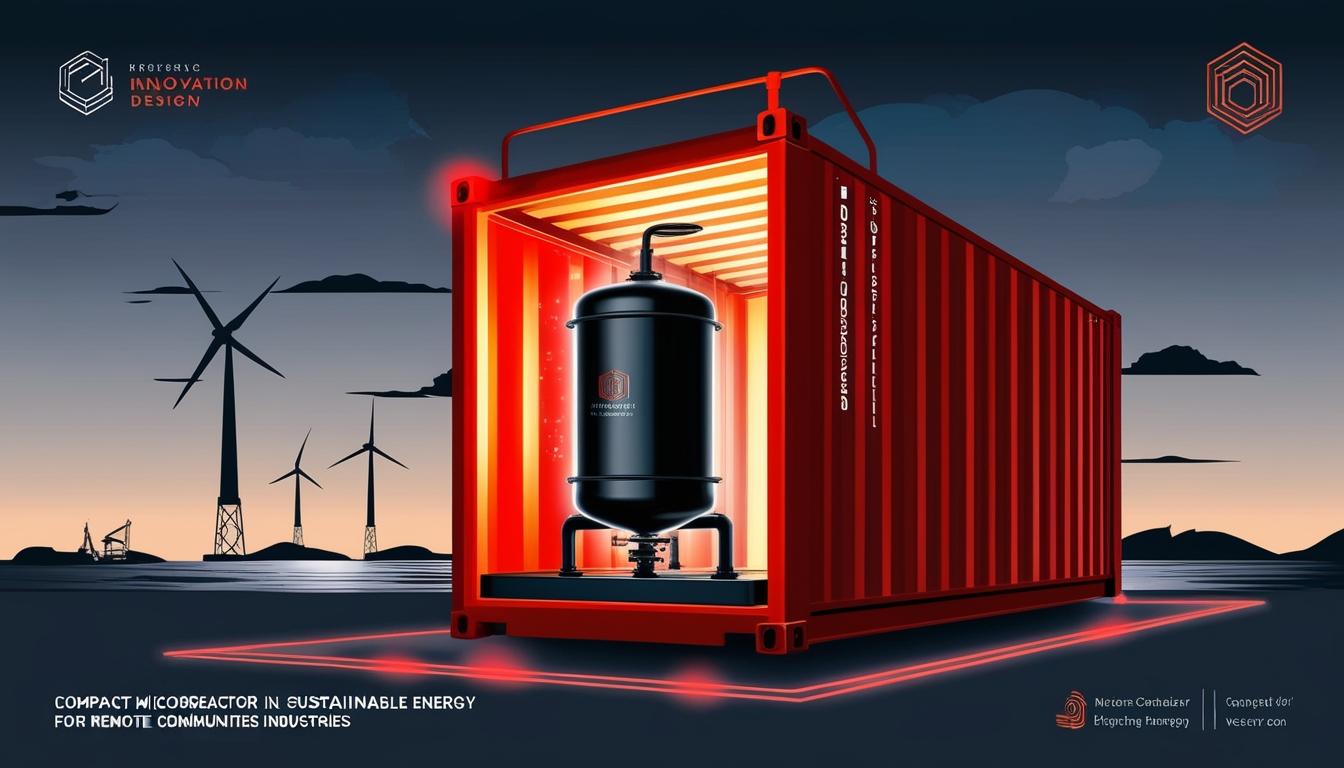Nuclear energy companies are pursuing innovations in reactor design by developing microreactors that are compact enough to fit within shipping containers, aiming to position these technologies as viable alternatives to electric batteries in the zero-carbon energy sector. Westinghouse is at the forefront of this initiative, driven by the idea that microreactors can supplant traditional diesel and gas generators employed in various contexts, including data centres, off-grid communities, and offshore oil and gas platforms.
Jon Ball, head of Westinghouse’s eVinci microreactor programme, explained, “Initially, the idea was there are parts of the economy that are very difficult to decarbonise, especially remote communities that depend on transportable diesel, which is very expensive. But the level of interest has really expanded and we believe this is going to be a significant growth area.” The nuclear sector is currently experiencing a resurgence as governments and major technology firms actively seek clean energy solutions to fulfil their climate goals.
The development of small modular reactors, with capacities reaching about 300 megawatts, is already underway, while microreactors—the focus of this current wave of innovation—have a more modest output, providing up to 20 megawatts, sufficient to supply energy to approximately 20,000 homes. These microreactors are expected to function similarly to large batteries, operating without the need for a control room or onsite personnel. Their design allows for easy transportation and setup, being plugged into a site and left to operate autonomously for several years before returning to the manufacturer for refuelling.
Recently, Westinghouse secured approval from US nuclear regulators for a control system that will eventually enable the 8-megawatt eVinci microreactor to be operated remotely. The design incorporates minimal moving parts and relies on pipes filled with liquid sodium to transfer heat generated from nuclear fuel to the surrounding environment, either producing electricity or being integrated into heating systems. Ball added, “Our goal is to be able to operate autonomously from a central location where we can just simply monitor a fleet of reactors that are deployed around the world.”
The eVinci microreactor is currently the first of its kind to complete engineering studies for an upcoming test programme, which is set to commence in 2027 at the Idaho National Laboratory in the US. Furthermore, Westinghouse has entered a partnership with Core Power, a UK start-up, aiming to develop nuclear power plants for maritime locations. Core Power’s chief executive, Mikal Bøe, conveyed optimism about the regulatory timeline, stating, “It is on track for an operating licence at the US Nuclear Regulatory Commission... We think 2029 is the time it comes, which is as early as anything will come on to the market."
Key sectors targeted for the deployment of eVinci reactors include data centres and both onshore and offshore segments of the oil and gas industry. The ability to operate multiple microreactors together could enhance resilience for data centres by diversifying energy sources. Additionally, opportunities in the mining sector have been identified, particularly for the extraction of critical minerals like cobalt and manganese, which are often found in isolated locations. Cambridge professor Ian Farnan pointed out that the introduction of such reactors could revolutionise mining operations, reducing reliance on diesel, which brings both high costs and logistical challenges.
Other notable players in the microreactor industry include BWX Technologies, which produces reactors for US navy submarines, and X-energy, which secured $500 million in investments to further their initiatives. Both companies are aligning with Project Pele, a US defence department initiative aimed at creating portable nuclear reactors that can be easily deployed.
Despite the advancing technology, J Clay Sell, chief executive of X-energy, remarked that the microreactor market remains “still emerging” and cautioned about the economic challenges tied to smaller-scale reactor production. He stated, “When you go down in size, the economics become much more challenged...”, emphasising the importance of scaling production to implement viable economic models.
Bøe highlighted that economies of scale could allow microreactors to be competitively priced, targeting a cost of between $100 and $150 per megawatt hour. While these costs may not align with grid-scale energy, they can be strategically competitive in isolated locations such as ports, terminals, and island environments where diesel or gas supply is exorbitantly priced.
The expansion of microreactor technology raises important regulatory considerations regarding safe operation, transportation, and potential vulnerabilities. Ronan Tanguy, the World Nuclear Association's programme lead for safety and licensing, noted that existing regulations may not adequately address the unique aspects of microreactors, particularly concerning remote operation and safeguarding against cyber threats. While Westinghouse claims that the eVinci will pass rigorous safety assessments, Tanguy outlined that new regulations would be essential, stating that the International Atomic Energy Agency is likely to issue high-level safety standards that could be adapted into national regulations.
As the nuclear industry adapts to meet growing energy demands, the ongoing development of microreactors could significantly alter the landscape of energy provision, particularly in sectors that have traditionally relied on less sustainable energy sources.
Source: Noah Wire Services
